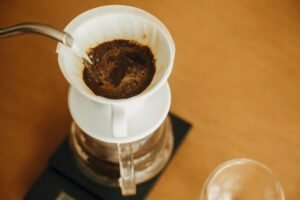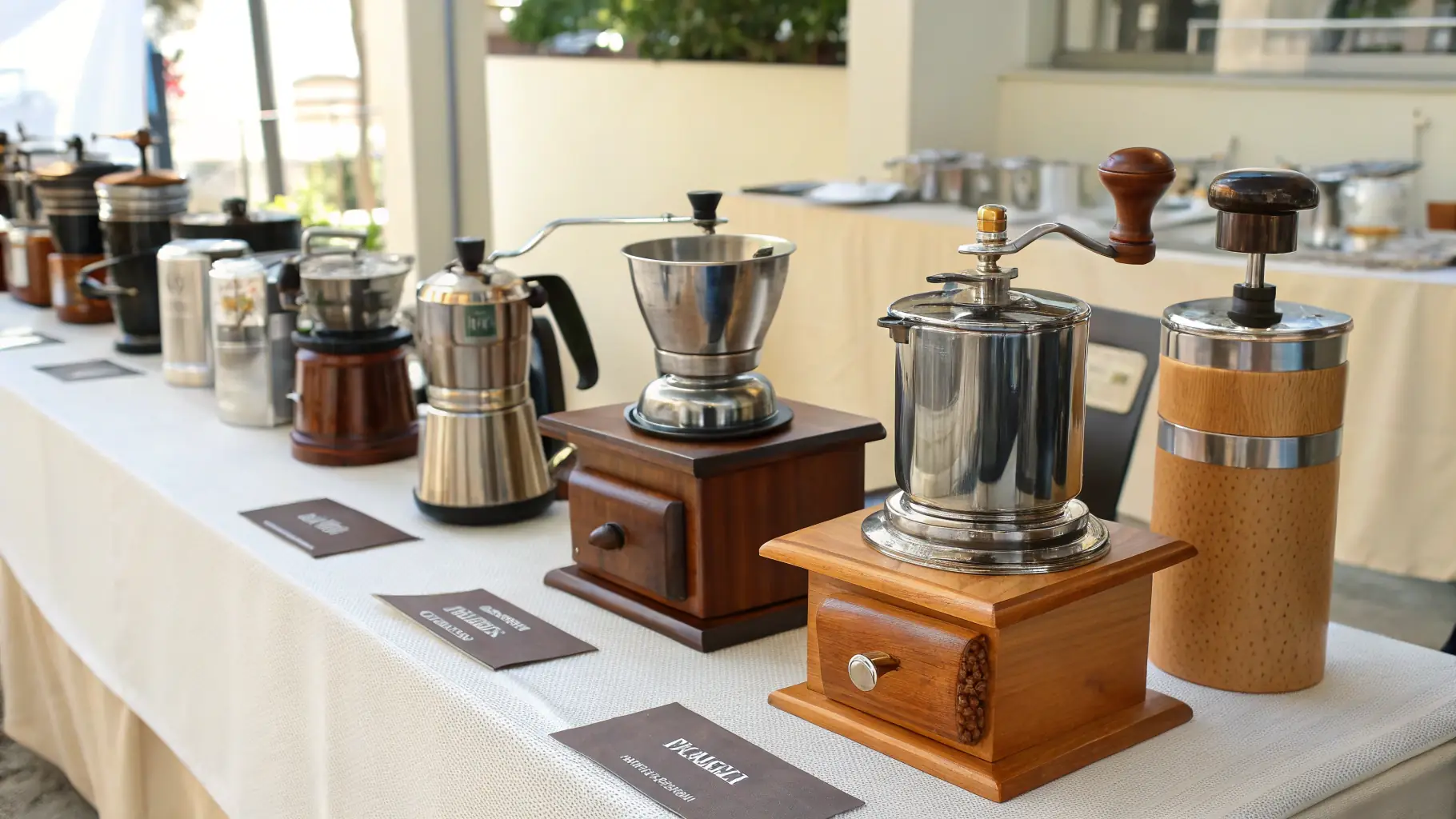Introduction to Home Brewing
In recent years, brewing coffee at home has evolved from a mere necessity into a cherished hobby for many enthusiasts. As individuals become more conscious of their coffee preferences, the practice of crafting one’s own cup has garnered significant attention. The increase in home coffee brewing can be attributed to a multitude of factors, including the rising cost of coffee shop beverages and the desire for personalized coffee experiences. Home brewing not only allows individuals to save money in the long run but also enables them to experiment with a variety of flavors and techniques.
One of the primary benefits of making coffee at home is the opportunity for customization. Unlike coffee shop offerings, which often have limited options, home brewers can choose their favorite beans, control the grind size, and adjust brewing parameters to suit their unique tastes. This level of control allows for endless experimentation, leading to the discovery of different flavor profiles and brewing styles that might not be available commercially. Additionally, brewing techniques such as pour-over, French press, and espresso open up a world of possibilities, elevating the overall coffee experience.
The satisfaction derived from successfully brewing a cup of coffee tailored to one’s taste is a rewarding aspect that many enthusiasts cherish. There is a certain joy that comes from engaging with the coffee-making process, from selecting fresh beans to savoring the final product. This active involvement fosters a deeper appreciation for coffee’s complexities and the artistry behind each brew. Moreover, the community surrounding home brewing has grown, with enthusiasts sharing tips and techniques, further enhancing the experience.
As we delve into the various methods of brewing coffee at home, this guide aims to inspire readers to explore these techniques and discover how they can enhance their coffee ritual. From essential equipment to specific brewing techniques, the following sections will equip you with the knowledge needed to elevate your at-home coffee experience to new heights.
Popular Brewing Methods and Equipment
Brewing quality coffee at home has gained significant popularity among enthusiasts, with various methods that cater to different tastes and preferences. Understanding each method’s unique features and required equipment can greatly enhance the home brewing experience.
One of the most celebrated methods is the Pour-Over technique, which allows for meticulous control over the brewing process. This method involves pouring hot water over coffee grounds in a filter, enabling precise extraction of flavors. Popular equipment for this method includes the Hario V60 and Chemex. Both brands are renowned for their quality and design, appealing to coffee purists who appreciate the artistry of brewing.
French Press is another favored brewing method, heralded for its simplicity and bold flavor profile. This method involves steeping coarsely ground coffee in hot water for several minutes before pressing down a metal or plastic plunger. Equipment-wise, the Bodum and Frieling French presses are highly recommended for their durability and performance, ensuring a rich and satisfying cup of coffee.
The Aeropress has emerged as a popular choice for those desiring a quick and versatile brewing option. This method utilizes air pressure to push hot water through coffee grounds, producing a concentrated brew. Its compact design makes it perfect for travelers, and brands like AeroPress Inc. offer a reliable product that consistently delivers quality results.
For espresso lovers, a dedicated Espresso Machine is essential. These machines use high pressure to extract flavors from finely ground coffee, resulting in a rich, creamy shot. Renowned brands such as Breville and De’Longhi provide various models that accommodate different budgets and skill levels, making it easier for home baristas to perfect their craft.
Lastly, the Cold Brew method has gained a following for its smooth and less acidic flavor profile. To prepare cold brew, coarsely ground coffee is steeped in cold water for an extended period, typically 12 to 24 hours. Equipment like the Takeya or Filtron can simplify the process, allowing coffee enthusiasts to enjoy refreshing cold brews at home.
Each of these brewing methods presents unique experiences and flavors, helping individuals find the perfect match for their coffee preferences while fostering a deeper appreciation for the art of coffee making.
Choosing the Right Coffee Beans
The selection of coffee beans is paramount to achieving an exceptional brew at home. The most widely consumed types of coffee beans are Arabica and Robusta, each offering unique flavor profiles and characteristics. Arabica beans are known for their smooth, sweet taste and higher acidity, making them ideal for those who appreciate a nuanced cup of coffee. In contrast, Robusta beans are characterized by their stronger, more bitter flavor and contain higher caffeine levels, which can provide a more robust experience. Understanding these differences is crucial for choosing beans that align with personal taste preferences.
Freshness and quality of coffee beans are vital to maximizing flavor. Beans tend to lose their taste within weeks if they are not stored properly. It is advisable to purchase whole beans rather than pre-ground coffee, as grinding accelerates the staling process. Whether one opts for local roasters or online retailers, selecting high-quality beans that have been recently roasted can significantly enhance the brewing experience. Many coffee enthusiasts find that sourcing beans from local roasters allows them to explore unique seasonal offerings that can elevate their coffee routine.
Once you have procured your coffee beans, proper storage is essential to maintain their freshness and flavor. Storing beans in an airtight container in a cool, dark place is recommended. Avoiding exposure to air, moisture, and light will help preserve the beans’ natural oils and aromas. Some coffee aficionados suggest that freezing beans may prolong freshness; however, it is crucial to ensure the beans are stored in a moisture-free environment when doing so.
Ultimately, investing time in selecting the right coffee beans can lead to a significantly enhanced home brewing experience. By understanding the different varieties and ensuring freshness through proper sourcing and storage, coffee lovers can enjoy a rich, flavorful cup that satisfies their palate.
Brewing Tips and Tricks for Quality Results
Achieving a consistently excellent cup of coffee at home requires attention to detail and a few essential techniques. One of the most crucial factors in brewing quality coffee is the quality of water used. Ideally, filtered or bottled water should be used as tap water often contains impurities and chlorine, which can adversely affect the flavor of the coffee. In addition, the temperature of the water plays a significant role; the optimal brewing temperature ranges from 195°F to 205°F (90°C to 96°C). Using water that is too hot can lead to over-extraction, resulting in bitterness, while water that is not hot enough may yield a weak brew.
Another essential component is grind size. The grind must be appropriate for the brewing method to ensure efficient extraction of flavors. For example, a fine grind is suitable for espresso machines, while a coarser grind works best for methods like French press or cold brew. Experimenting with different grind sizes can lead to discovering the perfect balance for your preferred brewing technique.
Brewing time is equally important. Each method has its ideal brewing time; for instance, espresso generally takes 25-30 seconds, while a French press might require steeping for about four minutes. Tuning in to these timeframes can dramatically influence the cup’s strength and flavor profile.
Lastly, maintaining brewing equipment is vital for consistent results. Regularly cleaning coffee makers, grinders, and other tools will prevent the build-up of coffee oils that can alter flavors and lead to stale-tasting brews. Common pitfalls such as bitterness and weak coffee can often be resolved by adjusting water temperature or grind size, while varying brew times can optimize flavor extraction. By following these tips, coffee enthusiasts can elevate their home brewing techniques, ensuring a rich and satisfying coffee experience every time.




